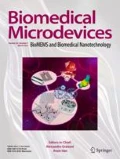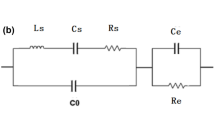Abstract
Cell-based bioassays were effective method to assess the compound toxicity by cell viability, and the traditional label-based methods missed much information of cell growth due to endpoint detection, while the higher throughputs were demanded to obtain dynamic information. Cell-based biosensor methods can dynamically and continuously monitor with cell viability, however, the dynamic information was often ignored or seldom utilized in the toxin and drug assessment. Here, we reported a high-efficient and high-content cytotoxic recording method via dynamic and continuous cell-based impedance biosensor technology. The dynamic cell viability, inhibition ratio and growth rate were derived from the dynamic response curves from the cell-based impedance biosensor. The results showed that the biosensors has the dose-dependent manners to diarrhetic shellfish toxin, okadiac acid based on the analysis of the dynamic cell viability and cell growth status. Moreover, the throughputs of dynamic cytotoxicity were compared between cell-based biosensor methods and label-based endpoint methods. This cell-based impedance biosensor can provide a flexible, cost and label-efficient platform of cell viability assessment in the shellfish toxin screening fields.







Similar content being viewed by others
References
M. Alexander, How toxic are toxic chemicals in soil? Environ. Sci. Technol. 29, 2713–2717 (1995)
L. M. Botana, N. Vilariño, A. Alfonso, et al., The problem of toxicity equivalent factors in developing alternative methods to animal bioassays for marine-toxin detection. TrAC. Trends Anal. Chem. 29, 1316–1325 (2010)
A. W. Browne, P. J. Harris, A. H. Hofny-Collins, et al., Organic production and ethical trade: definition, practice and links. Food Policy 25, 69–89 (2000)
A. Bulich, Use of luminescent bacteria for determining toxicity in aquatic environments. Aquat. Toxicol. 667, 98–106 (1979)
S. Crouch, R. Kozlowski, K. Slater, et al., The use of ATP bioluminescence as a measure of cell proliferation and cytotoxicity. J. Immunol. Methods 160, 81–88 (1993)
A. Dounay, C. Forsyth, Okadaic acid: the archetypal serine/threonine protein phosphatase inhibitor. Curr. Med. Chem. 9, 1939–1980 (2002)
S. E. Eklund, R. M. Snider, J. Wikswo, et al., Multianalyte microphysiometry as a tool in metabolomics and systems biology. J. Electroanal. Chem. 587, 333–339 (2006)
F. Fan, K. V. Wood, Bioluminescent assays for high-throughput screening. Assay Drug Dev. Technol. 5, 127–136 (2007)
A. Fanigliulo, P. Accossato, M. Adami, et al., Comparison between a LAPS and an FET-based sensor for cell-metabolism detection. Sensors Actuators B Chem. 32, 41–48 (1996)
I. Giaever, C. Keese, Monitoring fibroblast behavior in tissue culture with an applied electric field. Proc. Natl. Acad. Sci. 81, 3761–3764 (1984)
I. Giaever, C. R. Keese, A morphological biosensor for mammalian cells. Nature 366, 591–592 (1993)
C. Goodwin, S. Holt, S. Downes, et al., Microculture tetrazolium assays: a comparison between two new tetrazolium salts, XTT and MTS. J. Immunol. Methods 179, 95–103 (1995)
F. Heer, W. Franks, A. Blau, et al., CMOS microelectrode array for the monitoring of electrogenic cells. Biosens. Bioelectron. 20, 358–366 (2004)
M. Heinlaan, A. Ivask, I. Blinova, et al., Toxicity of nanosized and bulk ZnO, CuO and TiO 2 to bacteria Vibrio fischeri and crustaceans Daphnia magna and Thamnocephalus platyurus. Chemosphere 71, 1308–1316 (2008)
N. Hu, C. Wu, D. Ha, et al., A novel microphysiometer based on high sensitivity LAPS and microfluidic system for cellular metabolism study and rapid drug screening. Biosens. Bioelectron. 40, 167–173 (2013)
C. Kilkenny, N. Parsons, E. Kadyszewski, et al., Survey of the quality of experimental design, statistical analysis and reporting of research using animals. PLoS One 4, e7824 (2009)
A. Ledreux, A.-L. Sérandour, B. Morin, et al., Collaborative study for the detection of toxic compounds in shellfish extracts using cell-based assays. Part II: application to shellfish extracts spiked with lipophilic marine toxins. Anal. Bioanal. Chem. 403, 1995–2007 (2012)
S. H. Lee, S. B. Jun, H. J. Ko, et al., Cell-based olfactory biosensor using microfabricated planar electrode. Biosens. Bioelectron. 24, 2659–2664 (2009)
Q. Liu, C. Wu, H. Cai, et al., Cell-based biosensors and their application in biomedicine. Chem. Rev. 114, 6423–6461 (2014)
T. Mosmann, Rapid colorimetric assay for cellular growth and survival: application to proliferation and cytotoxicity assays. J. Immunol. Methods 65, 55–63 (1983)
A. L. Niles, R. A. Moravec, P. E. Hesselberth, et al., A homogeneous assay to measure live and dead cells in the same sample by detecting different protease markers. AnBio 366, 197–206 (2007)
W. Nisch, J. Böck, U. Egert, et al., A thin film microelectrode array for monitoring extracellular neuronal activity in vitro. Biosens. Bioelectron. 9, 737–741 (1994)
H. Olson, G. Betton, D. Robinson, et al., Concordance of the toxicity of pharmaceuticals in humans and in animals. Regul. Toxicol. Pharmacol. 32, 56–67 (2000)
A. Pfohl-Leszkowicz, R. A. Manderville, Ochratoxin a: an overview on toxicity and carcinogenicity in animals and humans. Mol. Nutr. Food Res. 51, 61–99 (2007)
A. Poghossian, S. Ingebrandt, A. Offenhäusser, et al., Field-effect devices for detecting cellular signals. Semin. Cell Dev. Biol. 20(1), 41–48 (2009)
E. Prassopoulou, P. Katikou, D. Georgantelis, et al., Detection of okadaic acid and related esters in mussels during diarrhetic shellfish poisoning (DSP) episodes in Greece using the mouse bioassay, the PP2A inhibition assay and HPLC with fluorimetric detection. Toxicon 53, 214–227 (2009)
T. L. Riss, R. A. Moravec, Use of multiple assay endpoints to investigate the effects of incubation time, dose of toxin, and plating density in cell-based cytotoxicity assays. Assay Drug Dev. Technol. 2, 51–62 (2004)
H. Tominaga, M. Ishiyama, F. Ohseto, et al., A water-soluble tetrazolium salt useful for colorimetric cell viability assay. Anal. Commun. 36, 47–50 (1999)
H. Wan, Q. Sun, H. Li, et al., Screen-printed gold electrode with gold nanoparticles modification for simultaneous electrochemical determination of lead and copper. Sensors Actuators B Chem. 209, 336–342 (2015)
J. Wang, Electrochemical biosensors: towards point-of-care cancer diagnostics. Biosens. Bioelectron. 21, 1887–1892 (2006)
P. Wang, Q. Liu, Cell-Based Biosensors: Principles and Applications (Artech House, Norwood, 2009)
L. Xiao, Z. Hu, W. Zhang, et al., Evaluation of doxorubicin toxicity on cardiomyocytes using a dual functional extracellular biochip. Biosens. Bioelectron. 26, 1493–1499 (2010)
C. Xie, Z. Lin, L. Hanson, et al., Intracellular recording of action potentials by nanopillar electroporation. Nat. Nanotechnol. 7, 185–190 (2012)
J. Zhou, C. Wu, J. Tu, et al., Assessment of cadmium-induced hepatotoxicity and protective effects of zinc against it using an improved cell-based biosensor. Sensors Actuators A Phys. 199, 156–164 (2013)
L. Zou, C. Wu, Q. Wang, et al., An improved sensitive assay for the detection of PSP toxins with neuroblastoma cell-based impedance biosensor. Biosens. Bioelectron. 67, 458–464 (2015)
L. Zou, Q. Wang, M. Tong, et al., Detection of diarrhetic shellfish poisoning toxins using high-sensitivity human cancer cell-based impedance biosensor. Sensors Actuators B Chem. 222, 205–212 (2016)
Acknowledgments
This work was supported by NSFC (No.61320106002, No.81501553), High-level Project of Cooperation Improvement of Sino-American and Oceania Region of Ministry of Education of China (No.20152026), and China Postdoctoral Science Foundation (No. 2015 M570511).
Author information
Authors and Affiliations
Corresponding author
Rights and permissions
About this article
Cite this article
Hu, N., Fang, J., Zou, L. et al. High-efficient and high-content cytotoxic recording via dynamic and continuous cell-based impedance biosensor technology. Biomed Microdevices 18, 94 (2016). https://doi.org/10.1007/s10544-016-0118-3
Published:
DOI: https://doi.org/10.1007/s10544-016-0118-3




